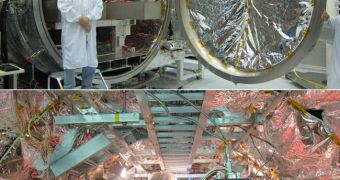Expert Michael Shao, currently based at the NASA Jet Propulsion Laboratory (JPL), in Pasadena, California, is one of the leading experts in the field of stellar interferometry. This is an imaging technique that allows astronomers to peer deep into the heart of the Universe, observing numerous exoplanets, and other bodies that would otherwise remain obscured from view. After 30 years of work in the field, Shao was this year awarded the 2010 Michelson Prize.
The decision was made by the International Astronomical Union (IAU) and The Mount Wilson Institute, Planet Quest reports. When Shao took to studying this field of science, stellar interferometry was a very little-known concept. “He [Shao's college adviser] said it was too hard. No one had written anything about the topic in 50 years, much less tried to make it a reality,” the expert remembers. “It feels great to get this award, it's really nice that it's happened. I initially got into this because I was looking for something challenging. I guess you could say that Antoine Labeyrie [the winner of the IAU 2010 Fizeau Prize) and I were really the ones who got it started – he in Europe, and me in the US,” he adds.
Connecting a number of separate telescopes through interferometry basically means combining the light beams observed by each individual observatory. The trick lies in how the light is added up. If interferometry is done properly, then the resulting image will have the same level of detail as if it was snapped by a telescope with a diameter equal to the distance between the two farthest-apart telescopes in the array. For example, two observatories located 5 kilometers apart will produce an image that will look as if it was snapped with a telescope featuring a 5-kilometer-wide main mirror.
“Having a technical conversation with Mike is always enlightening. He immediately picks out the salient points and either has the answer or does a back-of-the-envelope calculation to get it,” says JPL scientist Steve Edberg, who works with Shao. The two are colleagues in the Space Interferometry Mission, which is also known as SIM Lite. The goal of the project is to look for Earth-sized exoplanets outside of our solar system.

 14 DAY TRIAL //
14 DAY TRIAL //